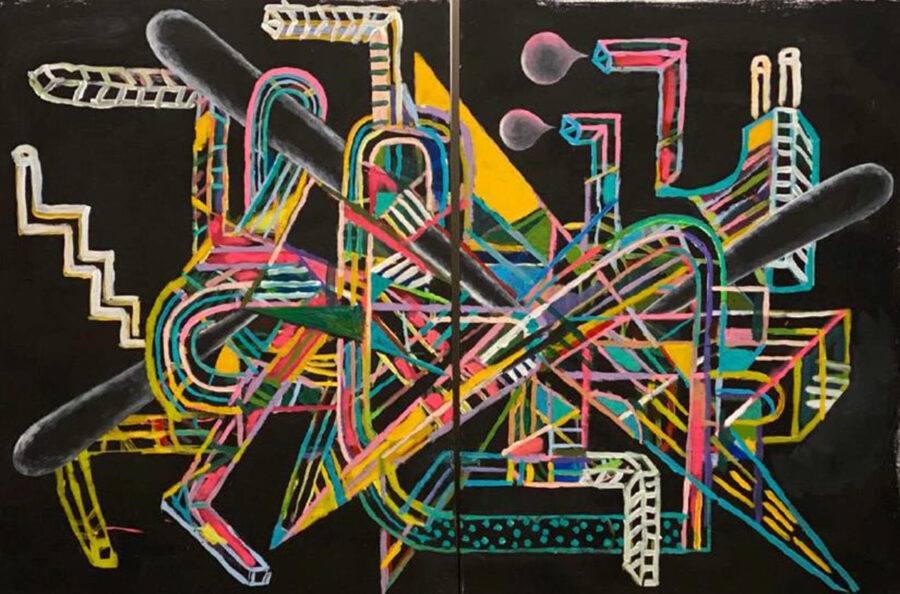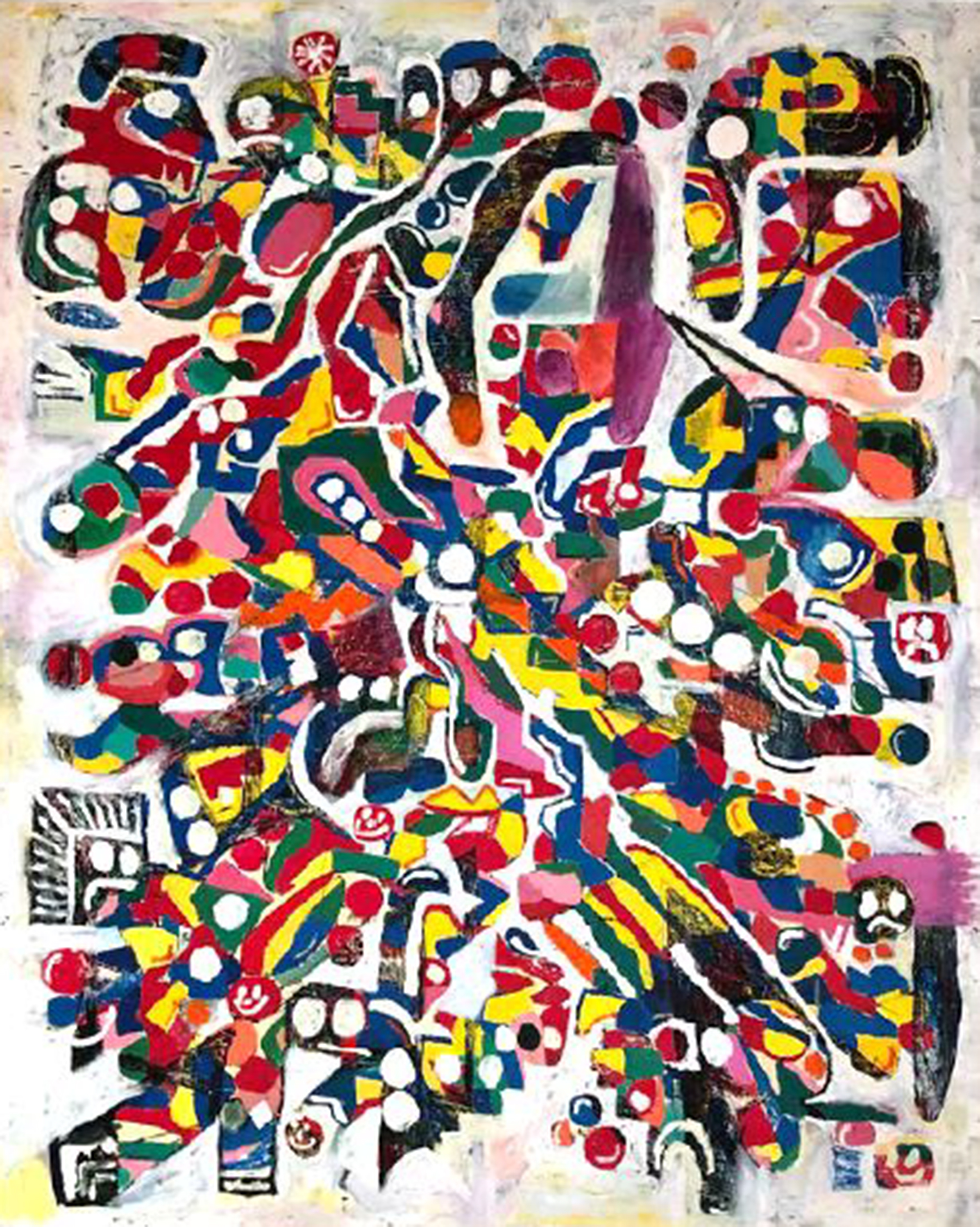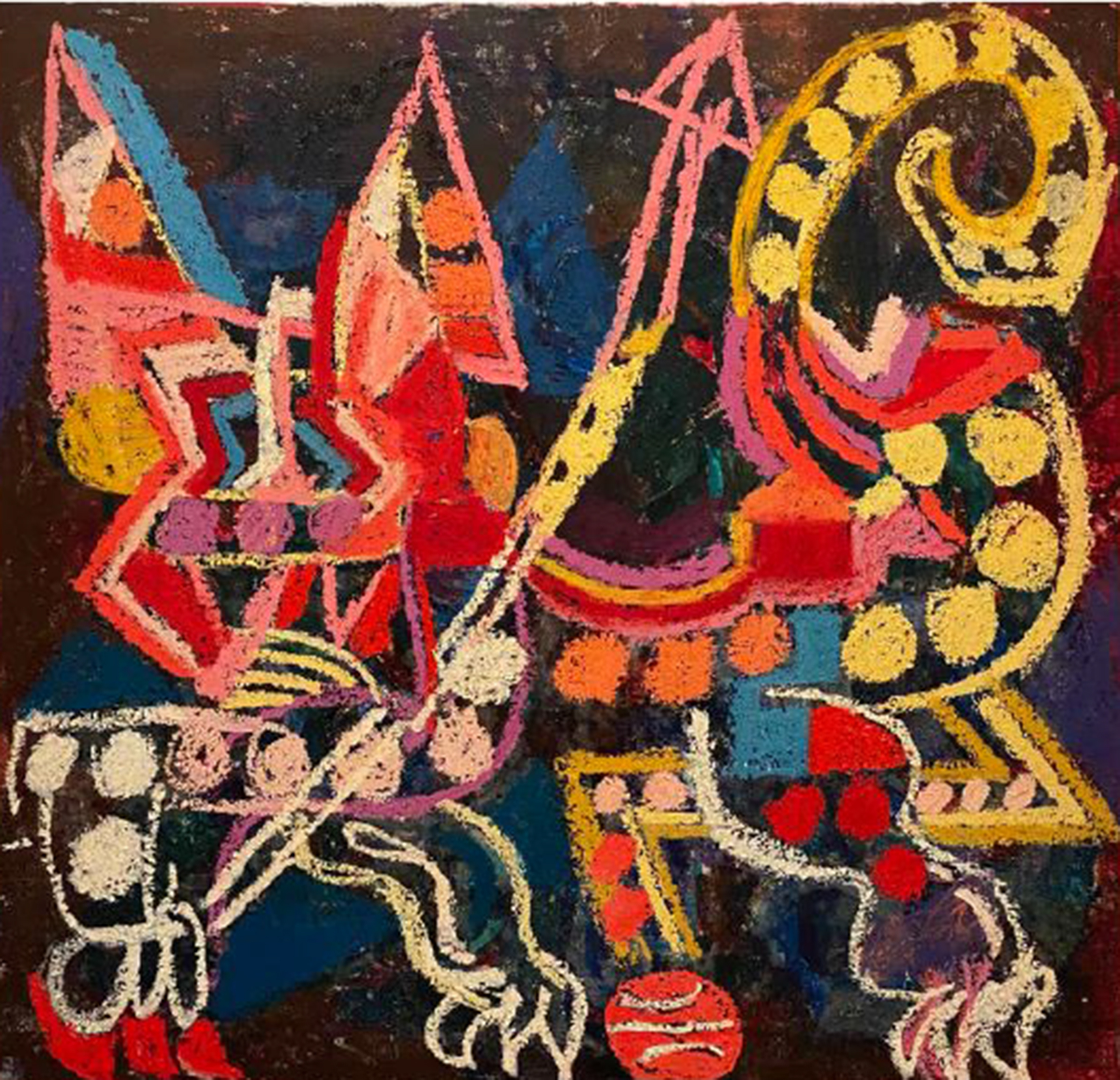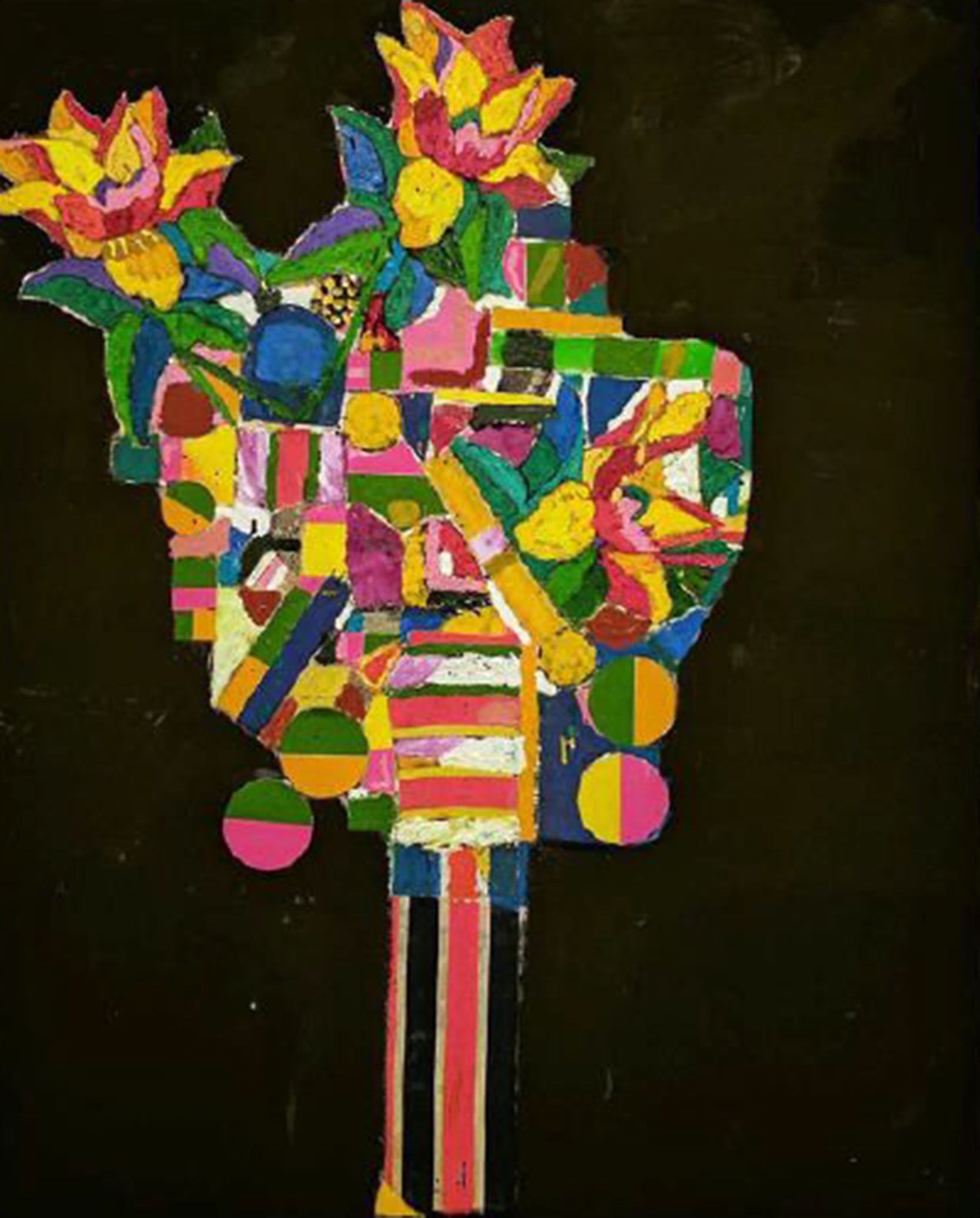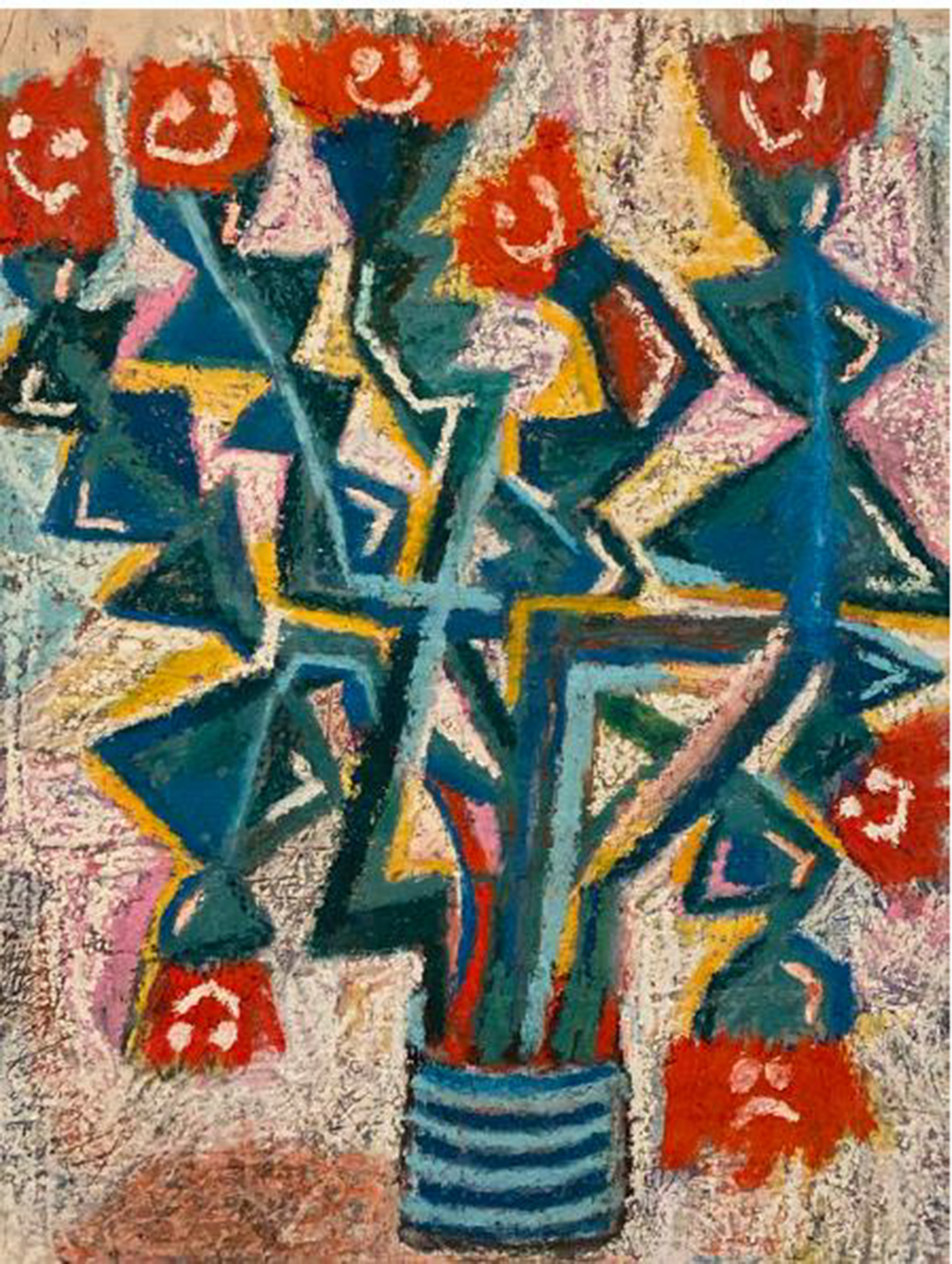In the ever-evolving world of street art, few names resonate as profoundly as Michael Polimeni, better known as BÄST. A visionary whose raw talent and distinct aesthetic captured the spirit of New York City, BÄST rose to prominence in the 1990s, blending pop culture, abstraction, and found materials into a singular artistic language that felt both chaotic and intentional, both streetwise and deeply personal.
Among those who recognized his genius early on was Banksy, who famously said of BÄST, “His work isn’t so much a melting pot of culture as a food blender, set on max and left until the motor burns out.” That motor never really did burn out. Even in his final years, BÄST was experimenting, evolving, and pushing boundaries, driven not by recognition but by an insatiable need to create. Today, his legacy lives on through a growing movement to preserve and reintroduce his work to the world, not as nostalgia, but as a force still pulsing with relevance, edge, and purpose.
Early Life and Influences
Born in Brooklyn in 1970 to an Italian-American family, BÄST’s passion for art emerged early, even though he received little encouragement at home. Undeterred, he forged his own path, attending Baruch College and enrolling in every art class he could find. BÄST’s early inspirations came from the gritty streets of Brooklyn and Manhattan, old storefronts, and the unfiltered energy of 1970s and 80s New York. He gravitated toward the work of artists like Robert Rauschenberg and Jean-Michel Basquiat, who similarly blurred the boundaries between fine art and urban culture.

From Street Art Sensation to Contemporary Icon
BÄST exploded onto the street art scene in the 1990s, gaining recognition for his colorful, layered wheat paste posters and mixed media collages that juxtaposed distorted faces and pop-infused imagery. His work stood out for its unique blend of satire, humor, and the unfiltered rhythm of the city. It was also deeply three dimensional in scope, with a body of work that revealed emotional depth, cultural critique, and a constantly evolving visual language.
Entirely analog in practice, BÄST never used computers or digital tools. His process was instinctive and hands on, sometimes distorting his own vision while painting and merging subject matter in spontaneous, unconventional ways. His compositions often thrived on contrast; humor with severity, beauty with abrasion, impulse with precision.
Unlike many street artists who courted fame, BÄST remained enigmatic, often skipping his own gallery openings or attending in disguise. He wanted his art to speak for itself. Over time, his style evolved. He began moving away from the streets and into more refined, introspective studio work. His later pieces reflected a shift toward contemporary painting; more deliberate, layered, and emotionally nuanced, while still rooted in the organic aesthetic that first defined him. During this period, he also began mixing his own pigments from scratch, giving his work a distinct material signature and treating process as part of the art itself.

Collaborations and Global Impact
Collaboration was central to BÄST’s creative identity, quickly gaining the attention of influential figures across street art, fashion, and fine art. He formed dynamic partnerships that pushed urban art into bold new territory, blending disciplines and perspectives in ways that expanded the reach and impact of his work.
One notable collaboration was with FAILE, resulting in the Deluxx Fluxx Arcade; part retro arcade, part immersive art experience. Debuting in London in 2010 and later shown at Art Basel Miami and The Brooklyn Museum, it became a defining moment in urban art, merging nostalgia, design, and humor with BÄST’s signature style.
BÄST also collaborated extensively with British artist Paul Insect, creating the Fly Tip Theatre, a troupe of puppets made from salvaged materials. Premiering at Banksy’s Dismaland in 2015, these characters were later featured in the 2023 book The Rubbish Puppeteers by Beyond the Streets, blending BÄST’s collage language with performance and sculpture.
In fashion, BÄST’s iconography became wearable art, collaborating with Marc Jacobs on a clothing line, Agnès b. on limited-edition carryalls and T-shirts, and Pro Keds on custom footwear. These projects expanded his reach, bridging street culture and high fashion.
Throughout his career, BÄST exhibited globally, maintaining his unfiltered energy and irreverent wit. Across all these collaborations, he remained true to his ethos: inventive, rebellious, and relentlessly original.

Who Was BÄST? The Man Behind the Art
Beyond his creative genius, BÄST was a deeply sensitive and complex individual. He carried himself with distinct style and presence. Every detail, from the way he dressed to the way he worked, reflected intention and individuality. He was passionate about the sensory experiences of life: fine dining, thoughtful design, meaningful conversation, and music that moved him.
A quiet observer and deep thinker, BÄST drew inspiration from overlooked corners of the world, discarded objects, forgotten spaces, and fleeting moments, all of which found their way into his work. On early Saturday mornings, he would often scour Coney Island and Floyd Bennett Field for driftwood, rusted tools, broken toys, and other debris, materials that became the backbone of his instinctive, transformative style.
BÄST never allowed commercial pressures to dictate his creative direction and refused commissions, painting only what he felt compelled to. While he thrived in solitude, working long hours in his studio, he cherished deep exchanges with those who shared his passion for art and culture. Still, he remained cautious of insincerity and often distanced himself from the more transactional side of the art world.

Beyond the Canvas and Legacy
BÄST’s passing in 2021 left a profound void in the art world. Though his loss was tragic, his voice endures through the visceral power of his work and the deep emotional current that runs through it. What mattered most to BÄST was the act of creating and advocating for others who created. His success and recognition were never driven by profit; rather, he created out of love for his craft and held deep admiration for anyone who approached their work with sincerity.
This passion extended beyond the canvas into his values. BÄST was deeply committed to environmental sustainability, often repurposing discarded materials in his work to minimize waste. He also had a profound love for animals, contributing to rescue efforts throughout his life, often fostering or supporting shelters in ways that remained private.
One of his long-held passions was helping children with disabilities. BÄST believed in the transformative power of art as a means of healing and communication. In his memory, the BÄST Estate is developing an art therapy program specifically for children with mental and developmental disabilities. This initiative reflects his belief in art’s power to include and uplift, ensuring that his legacy remains rooted in action, compassion, and the values he lived by.
The Estate is also dedicated to preserving his work and advancing the values of autonomy, authenticity, and creative freedom. It is developing educational initiatives to help young artists navigate the business side of the art world with clear eyes, empowering them to avoid exploitation, protect their rights, and build careers grounded in self-respect. Efforts to archive BÄST’s work and organize future exhibitions continue. Through these commitments, BÄST’s spirit will continue to challenge, uplift, and inspire future generations.

A Lasting Impact
BÄST embodied the raw, unfiltered energy of New York City, blending visual chaos with sharp wit, cultural references, and a fearless sense of experimentation. Whether through his street pieces, collaborations, or mixed-media paintings, his work remains a testament to relentless creativity and an unwavering refusal to conform. He once said he didn’t want to be put on the spot, he just wanted people to enjoy his art.
Today, as his work is rediscovered and celebrated, we honor not only his artistic brilliance but also his spirit, sensitivity, and deep dedication to his craft. In remembering BÄST, we celebrate a true original, an artist who lived and breathed his work, and whose legacy will continue to inspire for generations to come.









